Photography Storyboard Template
Crafting a photography storyboard
A photography storyboard template allows you to pre-visualize every shot, ensuring a smoother and more efficient photoshoot. Instead of figuring things out on the spot, you’ll have a clear blueprint guiding your team, from photographers to stylists. Using a storyboard template streamlines the creative process and enhances collaboration.
In this guide, we’ll walk through a step-by-step approach to creating a photography storyboard using StudioBinder’s storyboard creator. However, the following steps apply whether you’re using digital tools or sketching.
How to create a photography storyboard template
1. Choose your storyboard format
2. Analyze the photoshoot concept
3. Find or create images for your storyboard
4. Add detailed descriptions and annotations
Step 1
1. Choose your storyboard format
Deciding on the right photography storyboard template format depends on your needs. If you require detailed shots, opt for fewer panels with larger frames. For broader overviews, use storyboard templates with multiple smaller panels to maintain a clear flow.
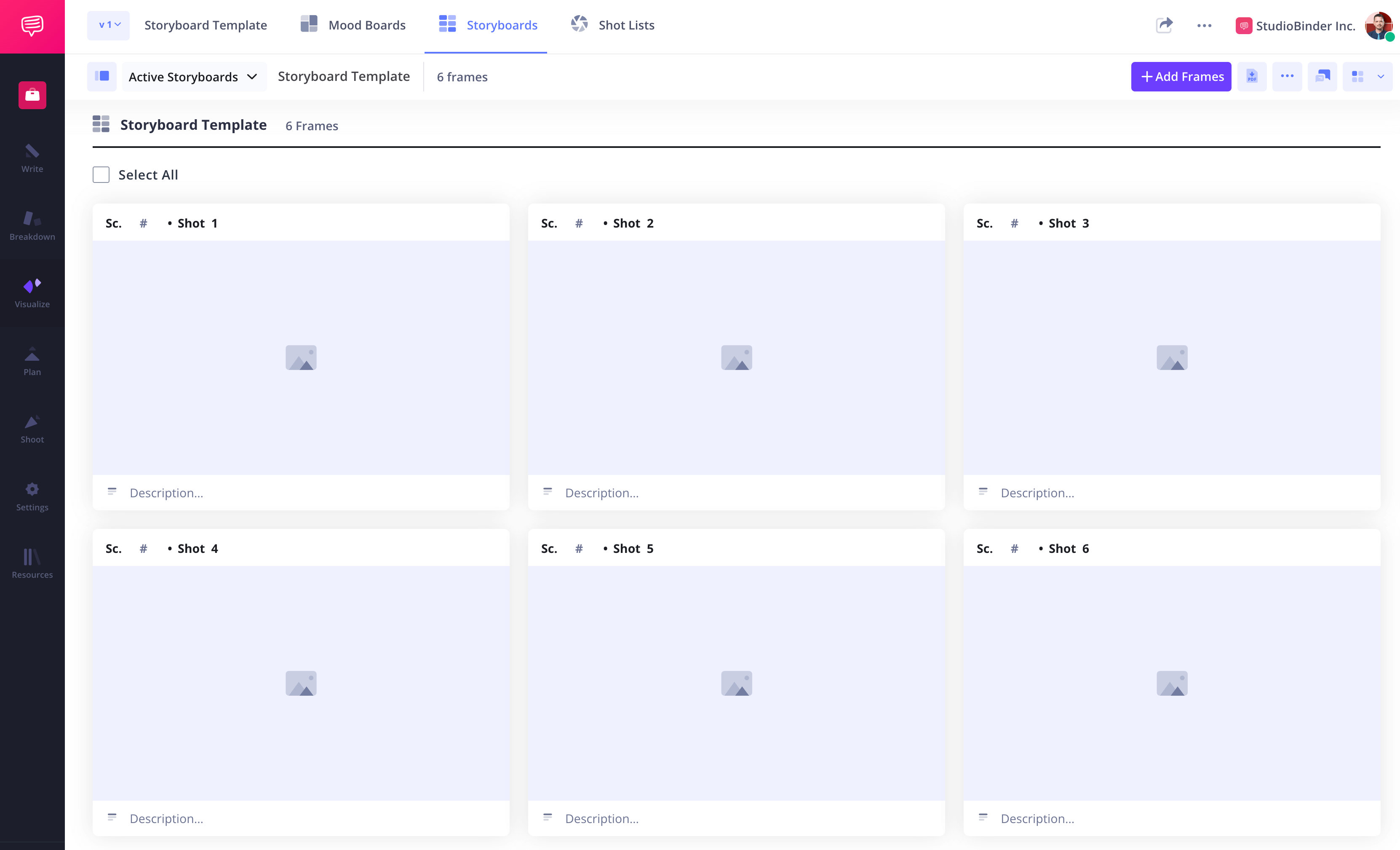
How to do this in StudioBinder
- Switch between view types (from 1 - 4 columns).
- Hide or reveal shot specs (scene number, description, audio, video).
- Automatically fit your image to the aspect ratio.
Step 2
2. Analyze the photoshoot concept
Understanding the shoot’s mood and objectives is crucial. Analyze the pitch or treatment to determine the story, tone, and emotions you need to convey. This will help shape your photography storyboard template and guide image selection.
How to do this in StudioBinder
- Import a script to automatically turn scenes into blank storyboards.
- Tag each line to create a new panel in the storyboard.
Step 3
3. Generate images for your storyboard
Populate your photography storyboard template with images that accurately represent your vision. You can: Sketch rough drafts or hire a storyboard artist, Use reference photos or take test shots with stand-ins, Arrange images sequentially to maintain a smooth narrative.
Leverage existing photographs or capture preliminary shots with stand-ins. This approach helps to visualize the final presentation and refine the vision before the actual shoot.
Arrange images sequentially in the order they will appear. This strategy ensures a cohesive narrative flow, providing clarity and structure for your creative process.
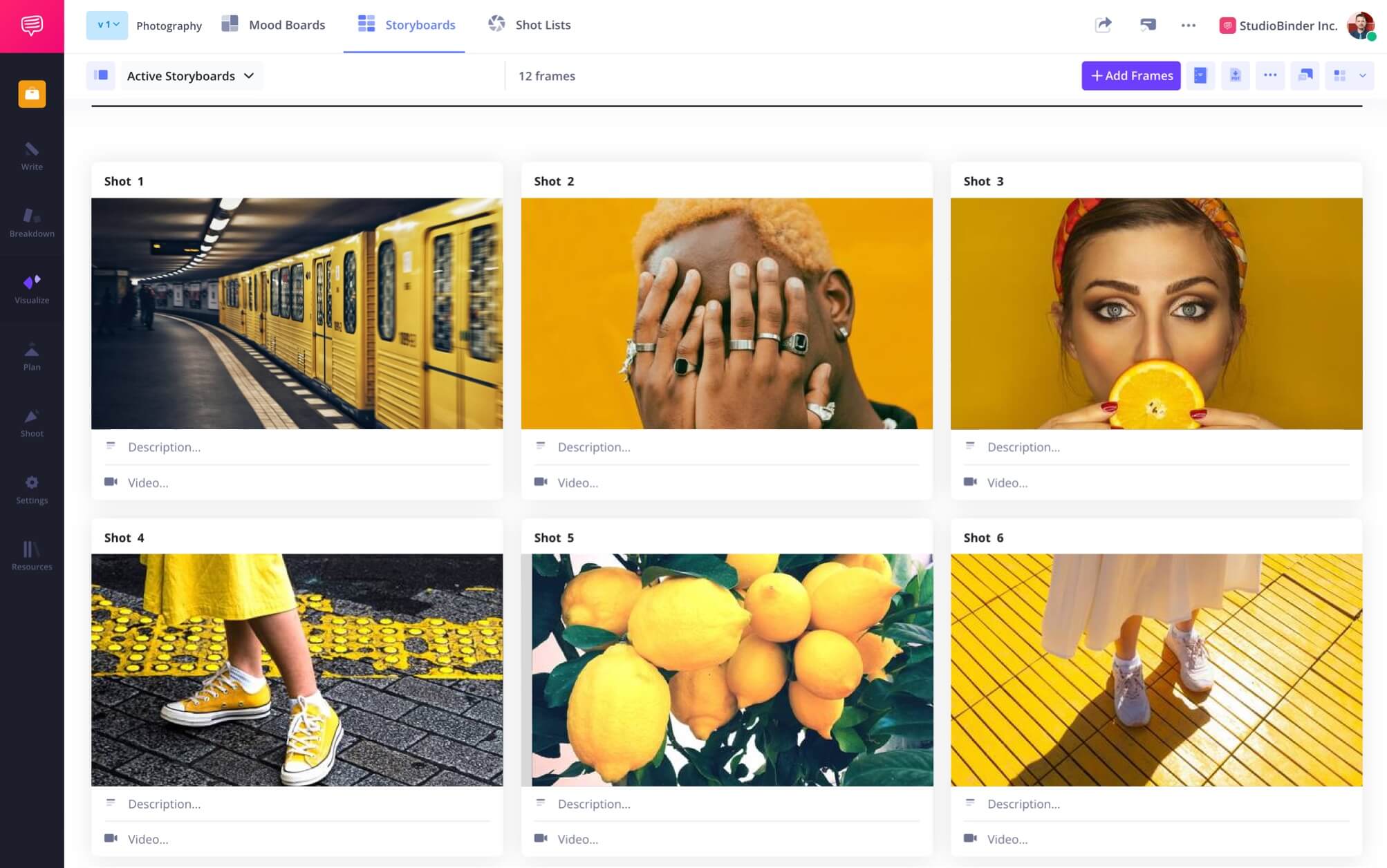

How to do this in StudioBinder
- Upload images anywhere, including previous projects.
- Use your webcam to capture hand-drawn frames.
- Reorder images by simply clicking and dragging frames.
Step 4
4. Add descriptions and annotations
Build out your storyboard with detailed notes. Include information about camera angles, lens choices, and lighting setups. Annotations should also note any special effects or post-processing plans to align with the final vision.
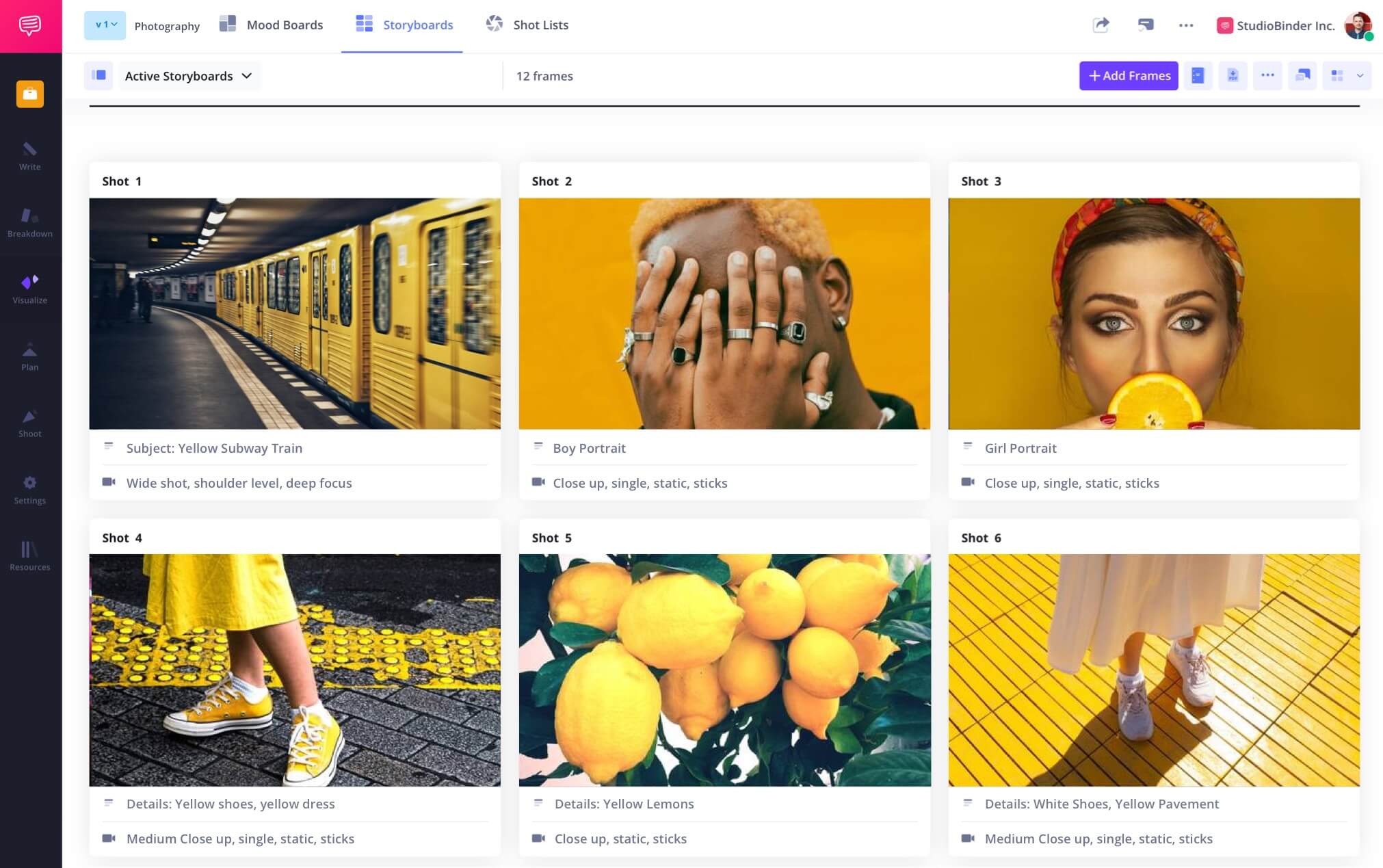

How to do this in StudioBinder
- Add scene descriptions, audio information like dialogue, and video information explaining the visuals like shot types and sizes.
- Create arrows, text and shapes to further clarify the direction of each image.
Step 5
5. Share and collaborate with your team
A storyboard template becomes more valuable when shared. Distribute your photography storyboard template to your creative team, including photographers, assistants, and stylists. Gathering feedback ensures a well-executed shoot.
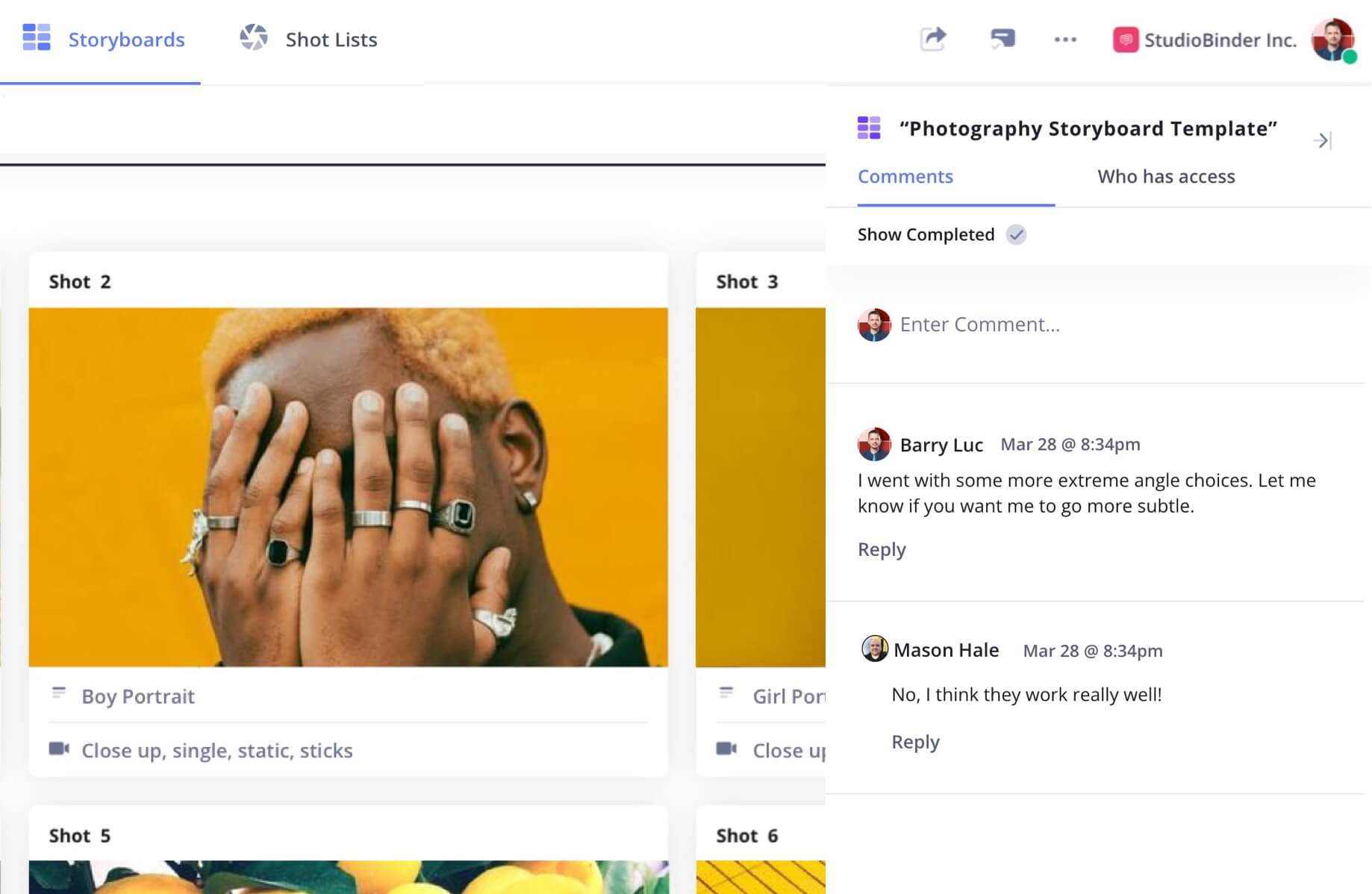

How to do this in StudioBinder
- Share with a view-only link, and invite collaborators to work on this specific feature/page (not the entire project).
- Collaborate with clients and team members with the comment feature.
Step 6
6. Print your storyboard for reference
Once finalized, print your photography storyboard template to keep it accessible during the shoot. A physical copy helps maintain focus and keeps everyone aligned with the creative vision.
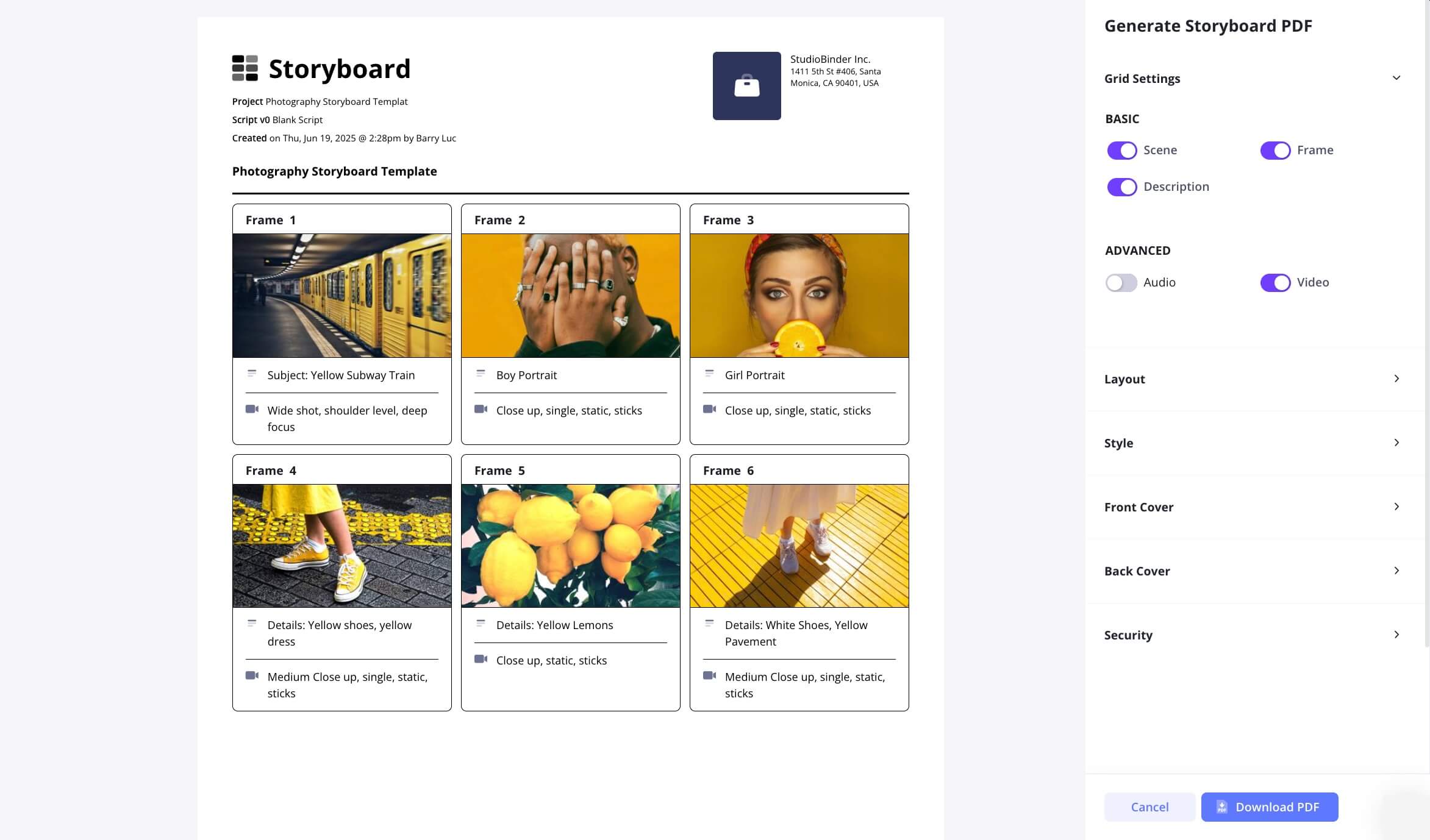

How to do this in StudioBinder
- Generate storyboard PDFs for a presentation with added security.
Conclusion
Impact of photography storyboards
A well-structured photography storyboard template transforms the creative process, allowing for better planning and execution. While spontaneity adds magic to any photoshoot, having a storyboard template ensures every shot is intentional.
This photography storyboard template is one of many storyboard templates you can use. Browse other storyboard templates on our Templates page.